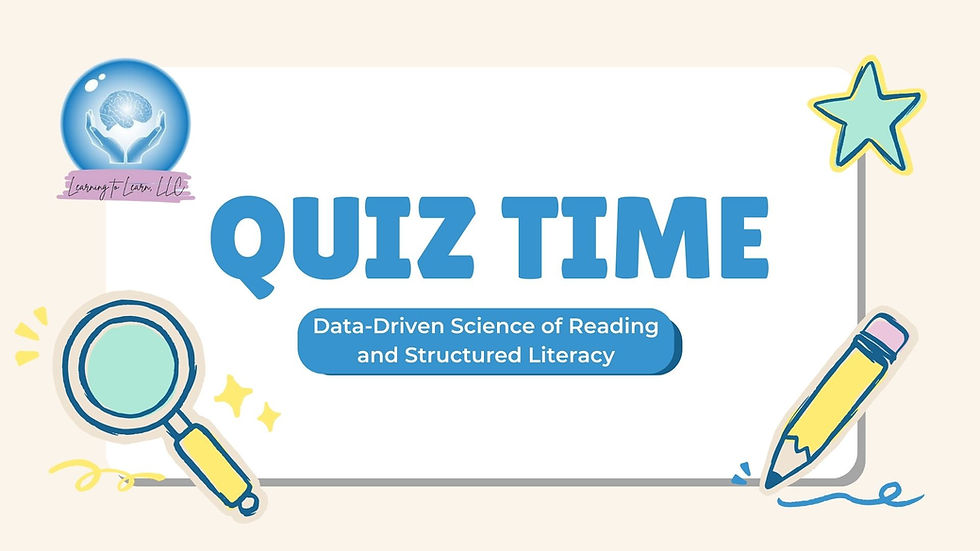It's Quiz Time! Are You Ready?
- Jennifer Cimini, M.S. Ed.
- Oct 22, 2024
- 1 min read
Updated: Oct 24, 2024

Data-Driven Science of Reading and Structured Literacy
Text-Dependent Questions:
What are the key components of the data-driven science of reading approach to improving reading instruction and literacy outcomes?
How does the structured literacy instructional approach differ from traditional reading instruction methods?
Explain how the data-driven science of reading and structured literacy approaches are combined to enhance reading proficiency for all students.
Answer Key:
The key components of the data-driven science of reading approach include:
Phonemic Awareness: Recognizing and manipulating sounds in spoken words.
Phonics: Understanding the relationship between sounds and their spelling.
Fluency: The ability to read with speed, accuracy, and proper expression.
Vocabulary: Building a robust word knowledge base to aid comprehension.
Comprehension: Developing the ability to understand and interpret text meaning.
The structured literacy instructional approach differs from traditional reading instruction in the following ways:
Explicit Instruction: Lessons are direct, clear, and unambiguous.
Systematic and Cumulative: Skills are taught logically, from simplest to most complex, ensuring mastery before moving on.
Diagnostic Teaching: Based on assessment data, instruction is tailored to students' individual needs.
Multi-Sensory Engagement: Engaging learners through multiple sensory pathways (visual, auditory, and kinesthetic).
The data-driven science of reading and structured literacy approaches are used in combination to enhance reading proficiency for all students. Teachers use data from research studies to guide their instructional practices and implement structured literacy programs that are based on scientific findings on how reading develops and how to best address reading difficulties. This combined approach ensures that all students develop essential reading skills effectively.
Well Done!
Comments